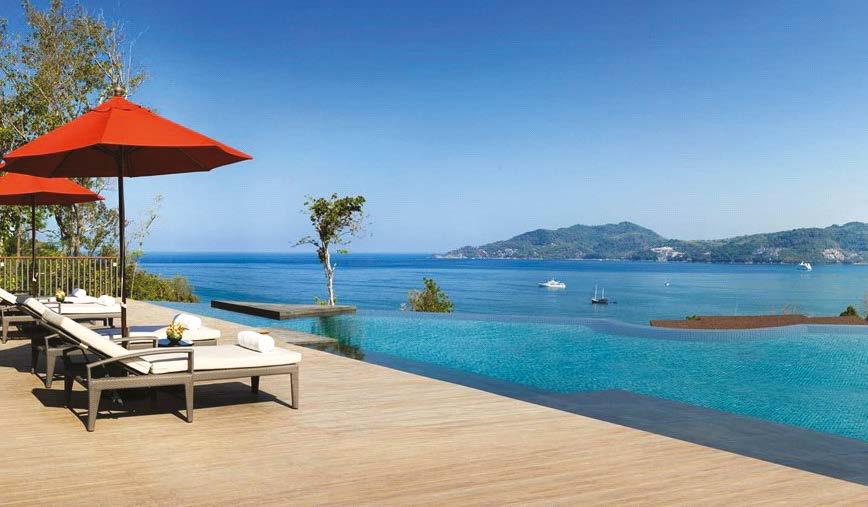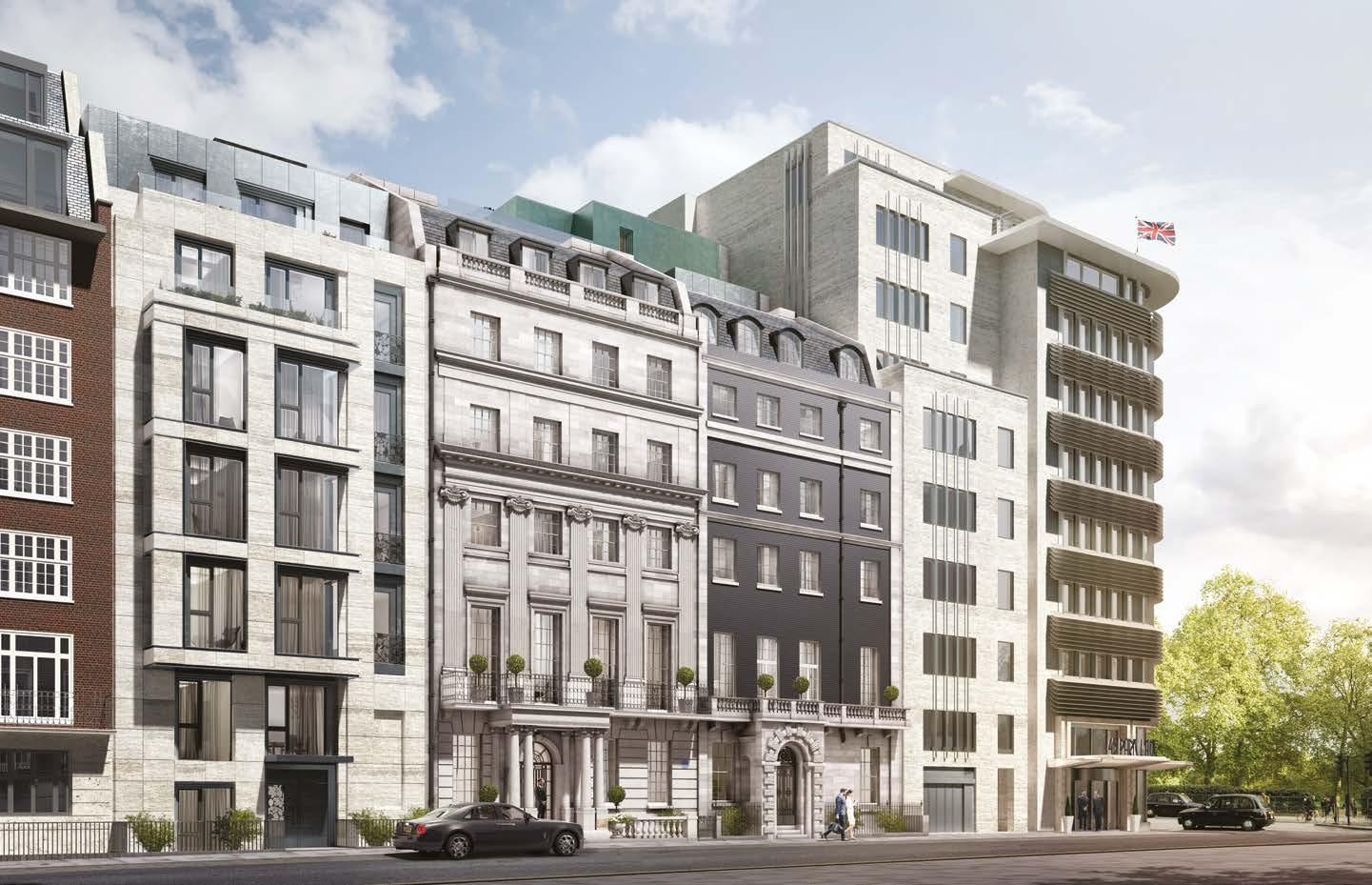
7 minute read
2019 Branded Residences Report
Global Sales Focus
GLOBAL BRANDED RESIDENCES
As branded residences proliferate, from the Caribbean to China, a growing number of developers, hotel groups and investors are looking to capitalise on this opportunity. But just what are branded residences, what underpins their appeal, and what is driving the rapid expansion and diversification of this sector?
The evolution of branded residences
he first true branded residence, the Sherry-Netherland hotel in Manhattan, opened its doors in 1927. More than 90 years on, the sector has grown enormously and is now to be found in over 60 countries across the globe.
Our research shows that there are now over 400 branded residences across the globe, the majority of which are hotel branded. Growth in the sector shows little sign of abating: “Marriott alone has more than 60 branded residential projects in the pipeline,” says Daniel von Barloewen, Regional Senior Director for Mixed-Use development for Europe at Marriott International. In 2018 and 2019 alone, Marriott plans to open 19 branded T
residential projects in nine countries.
The birth of the branded concept can be traced back to the prolonged economic boom of the 1920’s in America. Indeed, across the years, there is a direct correlation between wealth creation and demand for branded residences.
Much of the sector’s expansion has occurred in more recent decades. “The market did not really take-off until the mid-1980s when Four Seasons opened condos next to their hotel in Boston. That really demonstrated the success of the model,” says Chris Graham, an expert on the sector. The Aman hotel group launched the concept in a resort setting in 1988, with Amanpuri in Phuket, Thailand.
It is no coincidence that we are seeing such a renewed interest in the branded concept given the rapid growth in global wealth witnessed since 2000. Knight Frank’s Wealth Report highlights that the global ultra-wealthy population ($50m+ in net assets), grew by 18% in the five years up to 2017 and is forecast to increase a further 40% over the next five.
With the branded concept well established by hotel operators, the number and types of operators entering the space is now expanding and diversifying. Brands such as Versace, Armani and Porsche have all lent their names to developments in recent years. In this report, we look at the different types of branded residence, the rationale behind the concept, global exemplars and future trends.
Timeline of the branded residence
1927
Sherry-Netherland hotel opens in New York marking the birth of the concept
1985 Four Seasons opens its first branded private residences in Boston
1988 Aman launches the first resort branded residence with Amanpuri in Phuket,
Thailand
2011 The Residences at
Mandarin Oriental, London were completed setting a new world benchmark for luxury branded residences
2000-2018 Rapid expansion to over 400 projects by 2018
What defines a branded residence?
The traditional branded concept is a hotelled development with integrated or linked residences. They naturally benefit from the hotel brand (quality), management (smooth running) and services (luxury). In essence, this gives the owner the comfort and permanence of a home but with the full benefits and luxury of a five-star hotel.
This concept has diversified so that it can be offered more flexibly across varying markets and locations and now manifests itself in many ways globally, which fall into five broad categories, as demonstrated below.
While every scheme is different, one could argue that the impact of the branded concept is diluted the more it moves away from the original hotel-driven traditional model.
Typographies
Hotel led developments with integrated residences

Luxury resorts with residences used as holiday lets
Residential led developments with hotel adjacent Residential developments with hotel management Residential developments with remote hotel tie in


VALUE DRIVERS AND PRICE PREMIUMS
Supply and Demand Value Drivers
Supply Side In order to understand the value drivers of branded residences, below we examine the key motivators from both providers (supply) and purchasers (demand).
Hotel development cash flow
The ability to sell residences off-plan and receive significant capital payments upon practical completion, assist with both development and operational cash flow as hotels will naturally take time to operate at optimal occupancy rate.
Risk mitigation
Residences can help off-set cyclical and seasonal variations, as well as extraordinary events that pose a risk to any hotel business, both in terms of occupation and additional service take up.
Value premium of brand “Brand involvement can increase project visibility and enhance values for residential developers.
This can be something of an insurance policy,” says James Snelgar, director of global business development at YOO.
Planning benefits
The addition of residential apartments can be politically favourable where the delivery of apartments into a market is a priority.
Product diversification and brand enhancement
“For a hotel operator, residences can be a new theatre for the brand; a way to deepen the relationship with the consumers,” explains Piers Schmidt, a luxury brand consultant and commentator at
The Luxury Branding.
Market differentiation In mature or saturated markets, or where developers are looking to set new price records, branding and service can therefore be a key differential.
Residential identity /critical mass A new hotel can significantly enhance areas with limited residential identity or services. The sales appeal of a residential scheme in a commercial area, but with a trophy hotel attached, is far stronger.
Value/Cost benefit On a per square foot capital value basis, residential accommodation can drive a higher value than hotel accommodation. There could also be cost savings through greater efficiencies across gross/ net area ratios and specification requirements.
Does this mean that having a brand results in a price premium?
hile a brand association may result in a premium in any region, the additional value varies substantially from one place to another. “Where it’s an entirely new offering, we might be two or three times the price of anything in W
that market. In other markets there will be price ceilings,” says Price. “A variety of factors can drive price premiums,” adds von Barloewen. “Marriott International has, for example, Ritz-Carlton-branded residences in Kazakhstan and Bvlgari-branded residences in Dubai that commanded significant premiums for the developer over luxury, residential product in those markets.”
It is important to note that a price premium can be location driven. Indeed, our research shows that there is great variation on price differentials between different global locations and also different locations within cities. The data shows that the price differentials can vary from as much as 132% in some cities in Asia, to there being no differential at all.
Demand Side

One Barangaroo, Crown Residences
Developer quality covenant “When buyers see marketing for a Ritz-Carlton,
St Regis, EDITION or Marriott residence, they know that they’re going to get a quality product,” says Daniel von Barloewen.
Service provision and physical amenities “Residents’ services offer the individuals the opportunity to preserve their most precious commodity - time,” says Todd Nisbet, Crown Resorts. As individuals increasingly become global citizens with diverse business interests, time is becoming a rare commodity. With a full hospitality offering, individuals know that the day-to-day necessities are taken care of, be it housekeeping, concierge facilities, or room service.”
Building maintenance and managment James Price, vice president of residential at
Four Seasons, adds it is the “management services and guaranteed building maintenance which also enhances value.” Nisbet adds that hospitality brands are “always re-investing and maintaining their brand.”
Lock up and leave option Global buyers are prepared to pay a premium where they know their property is safe, maintained and serviced in their absence. This ranges from technical maintenance to having fresh flowers upon arrival.
Holiday rental/Investment yield potential “Often there’s a rental pool, which means owners can offset their maintenance costs. Now, 60-80% of buyers put their property in the rental pool, which is double what it might have been 10 years ago,” says Muriel Muirden of WATG. According to Price, the rental programmes tend to be a bigger driver in resort locations as those buying in cities tend to use them more regularly.
Kudos When all is said and done, people will always value a badge that is universally respected and that reflects well upon them.
Erin van Tuil, Partner at Knight Frank notes that “while the branded concept in the Sydney market is still embryonic, all the evidence we have to date from marketing One Barangaroo is that a premium of 25% to 35% ahead of comparable non-branded product is where the market will sit.”
However, assessing a price differential is extremely difficult as there are few cases that control for every factor affecting price. For a true comparison there would need to be a branded residence in the same location as a comparable nonbranded, with the same exterior and interior design.
A deep understanding of micro markets is required in asessing the business case for any branded concept. Put simply, will the market pay a premium and why?

